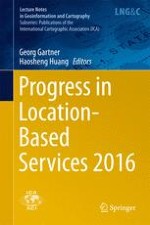2017 | OriginalPaper | Chapter
Enhancing Location Recommendation Through Proximity Indicators, Areal Descriptors, and Similarity Clusters
Author : Sebastian Meier
Published in: Progress in Location-Based Services 2016
Publisher: Springer International Publishing
Activate our intelligent search to find suitable subject content or patents.
Select sections of text to find matching patents with Artificial Intelligence. powered by
Select sections of text to find additional relevant content using AI-assisted search. powered by
